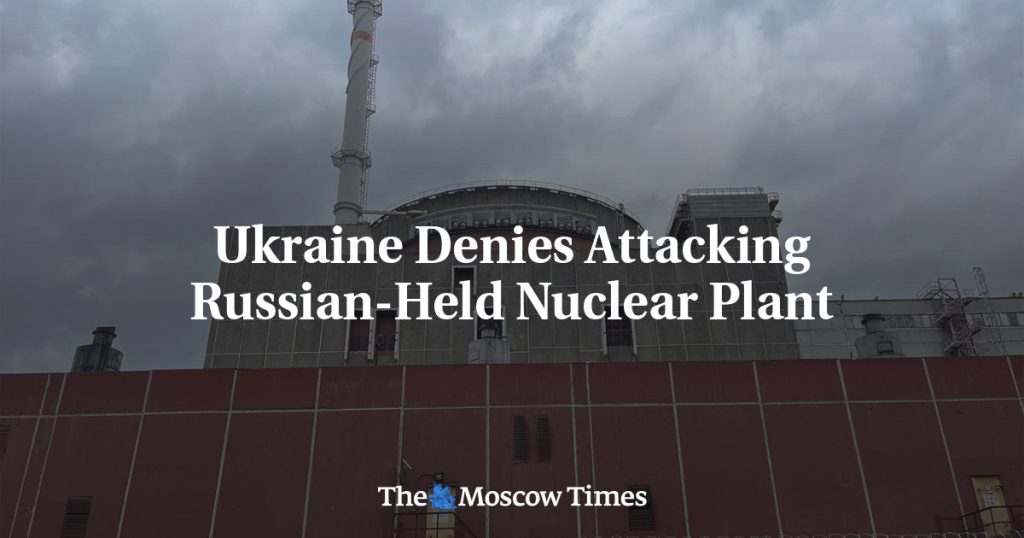Ukraine has accused Russia of spreading false information after Russian officials claimed a Ukrainian drone had attacked the Zaporizhzhia nuclear power plant. Lieutenant Andriy Kovalenko, head of Ukraine’s center for countering disinformation, stated that Russia was engaging in a campaign of provocation and spreading fake news about the alleged attack on the plant. Russian forces have been in control of the Zaporizhzhia plant since the beginning of their invasion of Ukraine in February 2022, and Kovalenko believes that Russia is using drones to create the illusion of a threat to the plant and nuclear safety coming from Ukraine.
The Zaporizhzhia nuclear power plant, located in southern Ukraine, is Europe’s largest such facility and is currently occupied by Russian forces. According to Russia’s nuclear agency Rosatom, the plant was targeted by a series of drone attacks on Sunday, resulting in injuries to three staff members. The attacks also damaged the site’s canteen, a cargo port, and the roof of one of the reactors. Despite the physical impact on one reactor and the casualties, the International Atomic Energy Agency (IAEA) confirmed that nuclear safety was not compromised as a result of the attacks.
Rosatom has called for Western nations and IAEA chief Rafael Grossi to condemn the escalation of tensions surrounding the Zaporizhzhia nuclear power plant. Kovalenko accused Russia of manipulating IAEA concerns and attempting to blame Ukraine for nuclear terrorism. Andriy Yusov, a spokesman for the Ukrainian defense ministry’s main intelligence directorate, also accused Russia of endangering the power station and carrying out simulated strikes in an attempt to create a false narrative.
The allegations of a Ukrainian drone attack on the Zaporizhzhia nuclear power plant have heightened tensions between Ukraine and Russia, with both sides pointing fingers at each other for the incident. The conflict has raised concerns about the safety and security of nuclear facilities in the region, especially as the plant in question is Europe’s largest. The IAEA continues to monitor the situation and has confirmed that nuclear safety protocols were followed and no significant risks were posed by the attacks.
The accusations and counter-accusations between Ukraine and Russia regarding the alleged drone attack on the Zaporizhzhia nuclear power plant highlight the ongoing conflict between the two countries. The use of drones in this incident adds a new dimension to the hostilities, as both sides engage in information warfare to shape the narrative surrounding the attack. The IAEA’s presence at the plant underscores the importance of international oversight in ensuring the safety of nuclear facilities during times of conflict.
As the situation at the Zaporizhzhia nuclear power plant continues to unfold, it is crucial for all parties involved to prioritize the safety and security of the facility and its staff. The use of drones in attacks on critical infrastructure raises concerns about the potential for further escalation and underscores the need for diplomatic solutions to prevent a further deterioration of the situation. The international community must remain vigilant and work towards de-escalating tensions in order to prevent any further incidents that could jeopardize the safety of nuclear facilities in the region.


